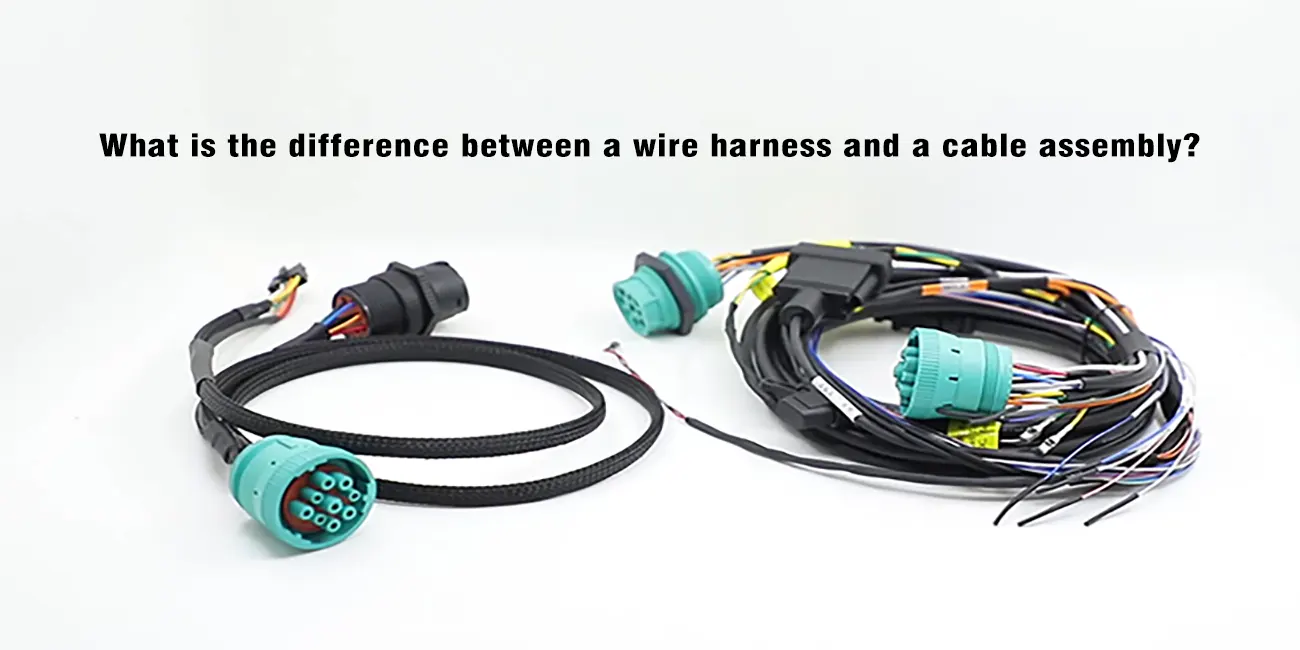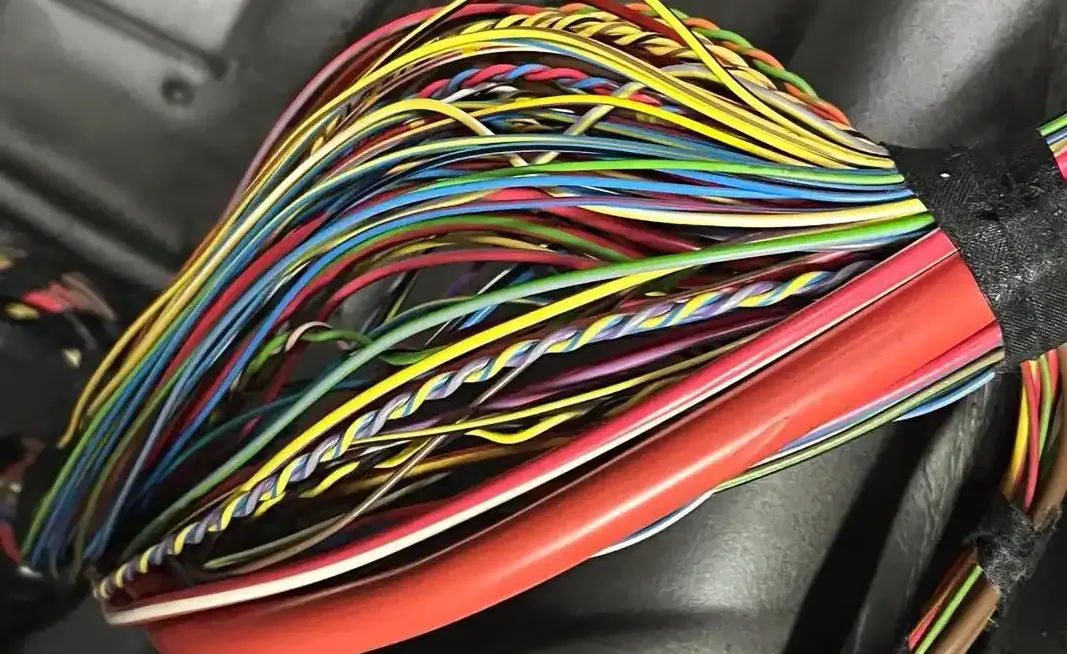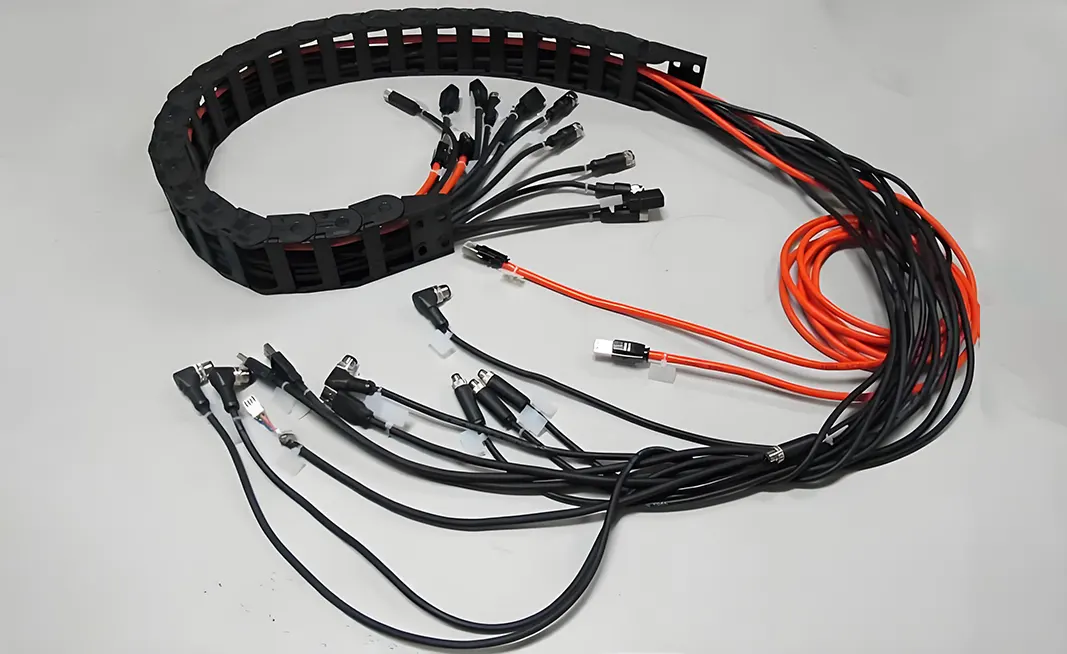
By quanyu lee
2025-03-22 02:27:34
The difference wire harness and cable assembly
A wire harness is a bundle of multiple wires with multiple branch connection points, which is used to connect multiple devices or circuits, while a cable assembly is a single or multiple wires integrated with fixed connectors at both ends, specifically used for connection between two devices.
The key difference between the two is the complexity and arrangement of the connections: wire harnesses connect multiple points through various branches and terminals, while cable assemblies are generally point-to-point.
Wire harness: A wire harness is an integrated component that bundles multiple wires or cables into a single unit along a specific path, equipped with a connector and a protective cover. Its main purpose is to transmit power and signals, and to achieve a stable connection and orderly wiring through modular design. This component is easy to install and has regular lines, which can effectively improve the reliability of the system. At present, wire harnesses have been widely used in industrial fields such as automobile manufacturing, aerospace, and communication equipment.
Cable assemblies are various accessories used to connect and protect cables, including plugs (connectors), adapters, fiber tails (pigtails), signal distributors (splitters), and labels (cable markers). These accessories are mainly used in electronic equipment, communication systems, and power facilities, and they have important functions of transmitting power, transmitting signals, and protecting cables.


Wire Harness vs. Cable Assembly Comparison Chart
| Contrast items | Wire Harness | Cable Assembly |
| Definition | An integrated assembly of multiple wires/cables bundled into a bundle with connectors and protective sleeves | A combination of accessories used to connect and protect cables (such as plugs, adapters, etc) |
| Core features | Power transmission, signal distribution, and modular wiring | Power transmission, signal transmission, and cable protection |
| Structure | Wires, terminals, sheaths, wrapping materials | Connectors, splices, pigtails, splitters, labels |
| Application scenarios | Internal circuit integration of automobiles, home appliances, and other equipment | External connections of electronic equipment, communication systems, and power facilities |
| Main features | Easy installation, neat lines, strong anti-interference | High protection level, adaptable to a complex environment, easy to maintain |
| Specification differences | Usually thinner and suitable for compact spaces | Various specifications, including high voltage/special cables |
Application areas of wire harnesses
Automotive industry
Automotive wiring harness is the main network component of automotive circuits, closely related to electronic control systems. It includes power lines and signal lines, which are used to drive actuators and transmit sensor input commands, respectively. With the increasing functionality of automobiles, the design and manufacturing of wiring harnesses have become more complex, such as the introduction of CAN bus configurations and multiplexing systems to reduce the number of wires.
Electronic devices
In electronic devices, wiring harnesses are used to connect various components and ensure the normal operation of the equipment. For example, in computers, household appliances, and industrial equipment, wiring harnesses are an indispensable component.
Communication system
In the field of communication, a wire harness is an important concept in traffic theory used to connect relay lines, switching devices, and control systems.

Application areas of cable components
Cable components play an important role in power transmission, communication, data transmission, and signal connections between devices. They can effectively transfer electrical energy from one device to another, transmit data, audio, and video signals, and to some extent resist external environmental influences such as waterproofing and anti-interference.

In short, wire harnesses are widely used in various fields such as mechanical equipment, automobiles, airplanes, ships, etc. For example, the car wiring harness is the nerve center of the vehicle's electrical system, responsible for connecting various electrical components. In these applications, wiring harnesses need to consider factors such as equipment layout, electromagnetic compatibility, high-temperature resistance, and vibration resistance. Cable components can withstand various harsh environmental tests and have a longer service life. They are usually used in outdoor environments or places with high temperatures, high humidity, and high dust, such as industrial automation equipment, power plants, and mines. Additionally, cable components are commonly used in high-reliability systems, including robots and heavy industrial machinery.



